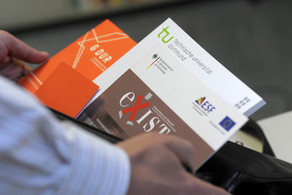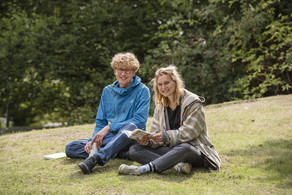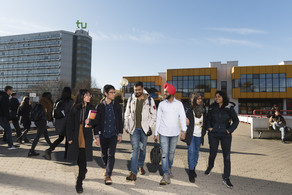Goethe-Institut, University Alliance Ruhr and DAAD further expand the Studienbrücke Program
- Top News
- Studying & Teaching at TU Dortmund University
- Higher Education Policy
- Press Releases
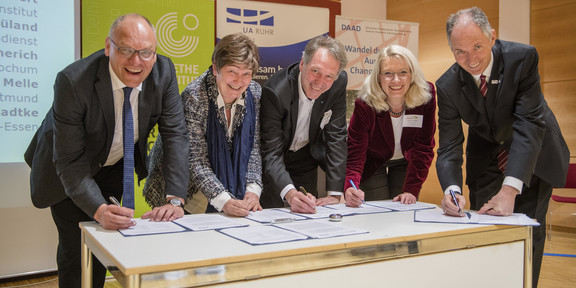
The aim of the Studienbrücke („Study Bridge“) Program is to attract students from abroad to study at higher education institutions in Germany, thereby providing them with a perfect springboard for a career in Germany or worldwide. Since 2015 under the Studienbrücke Program, the Goethe-Institut, the University Alliance Ruhr and the German Academic Exchange Service (DAAD) have been preparing foreign secondary school students in so far 18 countries for a course of study at a German university. In the presence of the Minister of Culture and Science of North Rhine-Westphalia, Isabel Pfeiffer-Poensgen, the partners signed a memorandum of understanding on March 8th to expand the Studienbrücke Program.
More than 130 Studienbrücke Program participants are currently studying at a German university, and more than 630 secondary school students are currently taking part in the preparations lasting several years in their country. The Goethe-Institut, the UA Ruhr and the DAAD have now agreed to expand the program to other countries and to gain additional partner universities. Minister Isabel Pfeiffer-Poensgen stated: “The signing of the memorandum of understanding between the Goethe-Institut, the University Alliance Ruhr and the DAAD is not only an important step for those involved, but also has an impact on the national and international competitiveness of North Rhine-Westphalia as a science location. Attracting highly qualified students from abroad not only serves the internationalization of the universities, but also strengthens their overall academic profile.”
Johannes Ebert, Secretary General of the Goethe-Institut, emphasized that the Studienbrücke was a sustainable program for the promotion of international educational biographies and the recruitment of specialists. “The Studienbrücke Program is an important investment in international educational exchange. The number of students at Germany’s universities is declining, and there is a shortage of qualified professionals. This is why the Goethe-Institut, the DAAD and German universities are pooling their expertise with the Studienbrücke Program and providing young qualified people from abroad direct access to studying in Germany. We are delighted that the expansion will enable us to gain additional countries and partner universities.”
Attractive partner universities
The success of the program is also largely based on the attractiveness of the partner universities. “The attractiveness of the Ruhr region as a study location is demonstrated not least by the large number of students who have come to us via the program in just a few years,” said Professor Insa Melle, Vice President Academic Affairs at TU Dortmund University. “The program will further intensify the existing diverse and long-standing cooperation between the University Alliance Ruhr and the partner universities and establish new forms of cooperation.” Axel Schölmerich, Rector of Ruhr-Universität Bochum, added: “The University Alliance Ruhr views itself as a strong partner in this network: We offer prospective students an unprecedented variety of subjects at three major universities, good prospects for the future in the emerging knowledge-based economy and an exciting environment in one of the largest metropolitan regions in Europe.”
The expansion of the Studienbrücke Program and the associated internationalization of German universities are also made possible, in particular, through digitization. This was stressed by Dorothea Rüland, Secretary General of the DAAD. “The open access to higher education, which the DAAD has been advocating for many years, has made the Studienbrücke Program possible in the first place. It will now be essential to expand the pioneering work of the DAAD and its partners in other areas as well. The Studienbrücke Program is an excellent example of how we can use the comprehensive instruments of digital transformation to expand the internationalization of higher education institutions.”
About the Studienbrücke Program
In 2015, the Goethe-Institut, together with the University Alliance Ruhr under the auspices of Ruhr-Universität Bochum and in cooperation with the DAAD and other partner universities in NRW and Brandenburg, launched the Studienbrücke Program. In the program, outstanding secondary school students from abroad are specifically prepared in their home country to study toward a bachelor’s degree in a STEM subject or in economic sciences in terms of German language proficiency, subject-specific language and learning culture, in order to gain direct access to a German partner university. The first expansion within the UA Ruhr already took place in the winter semester 2018/19, when first-year students from the USA began their studies at the three UA Ruhr universities as part of the Studienbrücke Program USA, which was set up under the auspices of TU Dortmund University in cooperation with the New York liaison office. Since its start, the Studienbrücke Program is being offered in 18 countries, including Russia, Ukraine, Belarus, Georgia, the USA, China, Vietnam and Brazil. More than 130 students studied at one of the German partner universities in 2018 as part of the Studienbrücke Program, and more than 630 secondary school students are currently in the preparatory phase in their home country. The expansion will now add further countries and partner universities.
Under the motto “Better Together”, Ruhr-Universität Bochum, TU Dortmund University and the University of Duisburg-Essen have joined together to form the University Alliance Ruhr (UA Ruhr). Since 2007, the three major universities in the Ruhr region have been pooling their expertise and thus strengthening their capabilities. More than 120,000 young people study, conduct research and work together in a network encompassing a subject spectrum ranging from engineering and natural sciences to the humanities, social sciences and medicine. The UA Ruhr thus makes the Ruhr region one of the strongest science locations in Germany.
For more information about the program, visit the Goethe-Institut website.


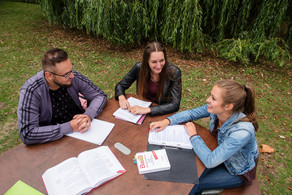
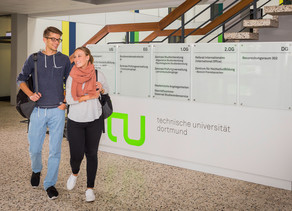
![[Translate to English:] Partner Four hands are holding the green logo of TU Dortmund University](/storages/tu_website/_processed_/1/d/csm_Partner_Nicole_Rechmann_KW_40b35bb3fd.jpg)

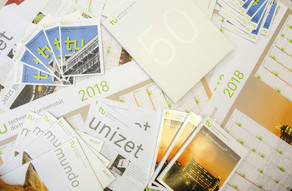

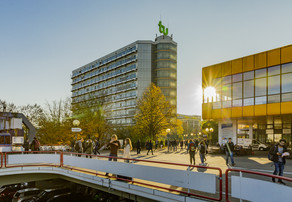
![[Translate to English:] Forschung An apparatus with tubes in a laboratory](/storages/tu_website/_processed_/0/c/csm_Forschung_Juergen_Huhn_cbd34afd6d.jpg)
![[Translate to English:] Studium Five students are sitting in a lecture hall. They are talking to each other.](/storages/tu_website/_processed_/c/9/csm_Studium_FelixSchmale_81d94adc86.jpg)
